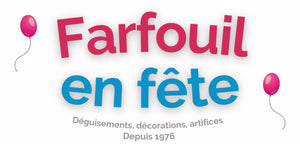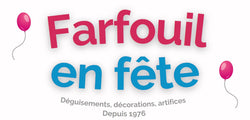For many people, Christmas is a commercial holiday, during which the family gathers around a beautifully decorated table and a Christmas tree twinkling with lights. This is an opportunity to offer gifts to loved ones and show them your love.
But originally, Christmas is a purely Christian holiday. It refers to the birth of Jesus, in the city of Bethlehem. The stories alluding to this day relate the events of the life of Christ according to the different Gospels.
Historically, we do not know the exact year or day of the birth of Jesus Christ. Even the Gospels give no information as to the date of birth of the savior of men. But Jesus would have been born between the year 7 and the year 2 before our era, in a stable.
To celebrate the birth of Christ, also called the feast of the Nativity, the church has chosen December 25. This date, which is certainly not in reality that of the birth of Jesus, was chosen by convention.
Contrary to what most people think, this is not an anniversary, but a message of peace, love and justice that the Church wishes to convey to people.
Christmas among Christians
Depending on the country and sometimes the region, Christmas is experienced differently.
The Catholic Christmas Party
The Christmas crib is one of the characteristic elements of this holiday among Catholics. Indeed, Christ would have been born in a manger. He settles among the poorest, despite his omnipotence and his divine power. It is a true sign of humility. The first informed of his birth are the shepherds and not the powerful.
It was in 1223 that François D'ASSISE created the first Christmas crib in Greccio, Italy. But it appears within the Catholic Church between the 15th and the 16th century.
The Christmas crib depicts the birth of Jesus as described in the Old Testament. It represents the table on which was born the Messiah, the Magi, the parents of Jesus.
Christmas among Orthodox Christians
Like Catholics, Greek Orthodox churches celebrate Christmas on December 25. But in Russian Orthodox churches, this holiday is celebrated on January 7. It also refers to the birth of Christ and the visit of the Magi. The Orthodox do not make nativity scenes, but they represent the birth of Jesus with icons.
Protestant Christmas
Protestants do not make Christmas nativity scenes, as is the case with Catholics, but they have developed the tradition of the Christmas tree, this beautifully decorated tree which shines with a thousand lights to symbolize the paradise of Adam and Eve. and knowledge of good and evil.
Christmas markets
In France, the tradition of Christmas markets began in Alsace. But during the 1990s, it spread to the rest of the country.
Originally, Christmas markets represented craft products dedicated to Christmas. But with modernization, they have grown and now offer ordinary products. This tradition generally extends between the end of November and the end of December.
The traditional Christmas tree and gifts
Originally, the Christmas tree is a decoration of pagan tradition. But the Christian Churches appropriated it during the Middle Ages. It was only towards the end of the 18th century that it became popular within the Protestant church for a start and to the rest of the Christian congregation thereafter.
The Christmas tree is often associated with gifts. They are exchanged on the evening of the 24th or the day of the 25th of December, with the people gathered under the same roof. But on the following days, relatives and other family members can also receive gifts.
For Christians, the Christmas present refers to the gifts offered to the Child Jesus by the Magi. These gifts were gold, frankincense and myrrh. However, the tradition of giving gifts on Christmas Day lives on outside of the Christian context. It can simply be a gesture of love and generosity. This also strongly contributes to the commercial character of the Christmas celebration.
Christmas Eve and Masses
For Christians, Christmas Eve is a tradition that has been carried on every year for centuries. Traditionally, mass was celebrated on December 24 from midnight. But today, it also often takes place earlier and earlier, in the early evening.
For Catholics, the evening of December 24 is occupied by mass and prayers. But for most people, it's a family time.
In the past, the tradition was that we light a log in the fireplace and gather around this fire for a moment of sharing and communion. But today, we can drink wine, share meals and tell stories. It is during these moments that children learn more about the history of their parents and loved ones.
Santa
Santa Claus is a character of Anglo-Saxon invention. He was born in the 19th century and it is he who is in charge of bringing the toys to the children who have been good during the year. We thought he was old, with a long white beard and wearing a red overcoat.
Good to know: you will find all the information, images, videos on Santa's website .
He is helped during his mission by reindeer, who drive his flying sleigh to the four corners of the world.
Traditional Christmas recipes
Just like the gifts, the tree and the decorations, the Christmas meal is a must. It is a hearty and festive meal consisting of turkey, seafood, foie gras which ends, as tradition dictates, with a Yule log. This cake, wrapped in cream and sometimes ice cream, is reminiscent of the old translation which wanted us to put a log on the fire to warm the house. Today, we share it at the foot of the fireplace while telling beautiful stories.







